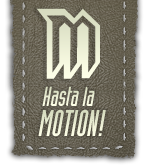I ran into a problem in nuke with my matte pass!
I divided my scene in different passes and also different layers.
i.e. i have a forground layer with all the characters and assets on it, then i have a ground layer, a background layer and a sky layer.
I’ve done this so that i can correct and tweak every layer on its own.
Since for example the plant is partly in the ground, i made myself a matte pass.
i’ve done that by applying a white surfaceshader to my forground and a black surfaceshader on the ground, background and sky layer.
With this matte pass i can cut my forground so that it will match up with my scene.
But unfortunately the matte pass now is one pixel too small and the skylayer is cominig through wich leads to a blue line where the plant should touch the ground.
Why is this happening and how can i fix this.
Anybody got an idea?
Greetings
Braggart
Ps.: I attached a jpeg which should clarify my problem here. unfortunately u cant quite see what i mean in the jpeg. Therefore i also attached a tga file. The blue line between the ground and the plant is clearly visible in the tga file.
i also uploaded my nuke script and a multichannel open exr file with all the layers i used for the comp.

